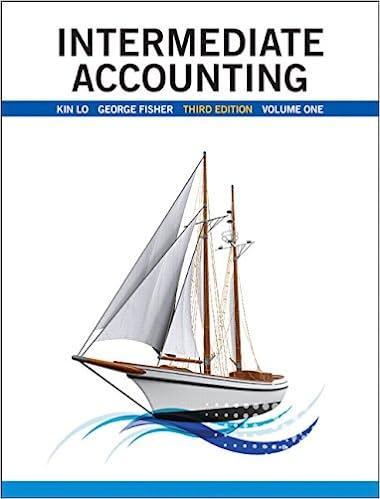Required
a.
Complete the financial statements for Years 3 and 4.
b.
In the following?tables, please complete the column for?"4-year Total." Compare the?4-year totals for cash flow and income. Comment on the similarities and differences.
Investors provide $20 million in financing to start up the company. Each ship costs $5 million and on average can complete 10 voyages, unless it is sunk by storms, hazards, or pirates. . Operating costs for each voyage are $1 million to pay for the crew's wages and to stock the ship with inventories and supplies. The company must pay for these costs in advance because the goods and the crew may perish at sea. A successful voyage returns usually within a year, (sometimes longer depending on weather conditions), with goods that can be sold for $5 million. For accrual reporting, the company records the cost of products shipped out and traded in exchange for products from Asia when the Asian products are sold at the home port. Similarly, the company records the cost of supplies and wages, as well as depreciation when ship returns home. When the company receives information about the sinking of one of its ships, the company writes off the recorded value of that ship and expenses any inventories, prepaid wages, and prepaid supplies on the books. In addition, assume that the remaining ships are sold for $3.5 million each just before the end of Year 4, in preparation for the dissolution of the company.Consider the following hypothetical series of trading voyages, additional facts, and Year 1 and Year 2 financial statements for Tradewinds Company. (Click the icon to view the timeline.) i (Click the icon to view the facts.) (Click the icon to view the statements.) Required a. Complete the financial statements for Years 3 and 4. b. In the following tables, please complete the column for "4-year Total." Compare the 4-year totals for cash flow and income. Comment on the similarities and differences. Requirements a. and b. Complete the financial statements for Years 3 and 4 and then for the "4-year Total" column. Compare the 4-year totals for cash flow and income. Comment on the similarities and differences. Begin by completing the cash flow statement for Years 3 and 4 and for the 4-year total. (Use a minus sign or parentheses for a cash outflow. Enter a "0" for any zero balances.) 4-year $millions Year 1 Year 2 Year 3 Year 4 Total Cash flow statement Operations Inflow from sale of goods 5.0 $ 5.0 Outflow from operating costs (3.0 (2.0 Cash flow from operations 2.0 3.0 Cash flow from investing activities (15.0) 0.0 Cash flow from financing activities 20.0 0.0 Net cash flow for the year 7.0 3.0 Cash at beginning of year 0.0 7.0 Cash at end of year $ 7.0 $ 10.04-year (Smillions) Year 1 Year 2 Year 3 Year 4 Total Statement of income and retained earnings Revenue ($5m/arrival) 5.0 $ 5.0 Operating expenses ($1m/arrival) (1.0) (1.0 Depreciation ($0.5m/arrival) (0.5) (0.5 Loss on ships 0.0 (4.5) Write-off of prepaid expenses 0.0 (1.0 Net income (loss) 3.5 (2.0) Retained earnings at beginning of year 0.0 3.5 Retained earnings at end of year $ 3.5 $ 1.5 Balance sheet Cash 7.0 10.0 Prepaid expenses 2.0 2.0 Ships at cost 15.0 10.0 Less: accumulated depreciation (0.5) (0.5) Total assets 23.5 21.5 Contributed capital 20.0 20.0 Retained earnings 3.5 1.5 Total equity 23.5 $ 21.5Compare the 4-year totals for cash flow and income. Comment on the similarities and differences. The total net cash flows for the 4-year period the cumulative net income over the four years. The total cash flows for equals the amount of over the four years. In addition, just prior to dissolution of the company, the amount of cash equals the balance in which is comprised of4-year Smillions Year 1 Year 2 Year 3 Year 4 total Cash flow statement Operations Inflow from sale of goods S 5 5 5 Outflow from operating costs (3) (2) Cash flow from operations 2 Cash flow from investing activities (15) Cash flow from financing activities 20 Net cash flow for the year 3 Cash at beginning of year Cash at end of year S 7 5 104-year ($millions) Year 1 Year 2 Year 3 Year 4 total Statement of income and retained earnings Revenue ($5m/arrival) 5.0 5.0 Operating expenses ($1m/arrival) (1.0) (1.0) Depreciation ($0.5m/arrival) (0.5) (0.5) Write-off of sunken ship 0.0 (4.5) Write-off of prepaid expenses 0.0 (1.0) Net income (loss) 3.5 (2.0) Retained earnings at beginning of year 0.0 3.5 Retained earnings at end of year S 3.5 5 1.5 Balance sheet Cash 7.0 10.0 Prepaid expenses 2.0 2.0 Ships at cost 15.0 10.0 Less: accumulated depreciation (0.5) (0.5) Total assets 23.5 21.5 Contributed capital 20.0 20.0 Retained earnings 3.5 1.5 Total equity 23.5 5 21.5













